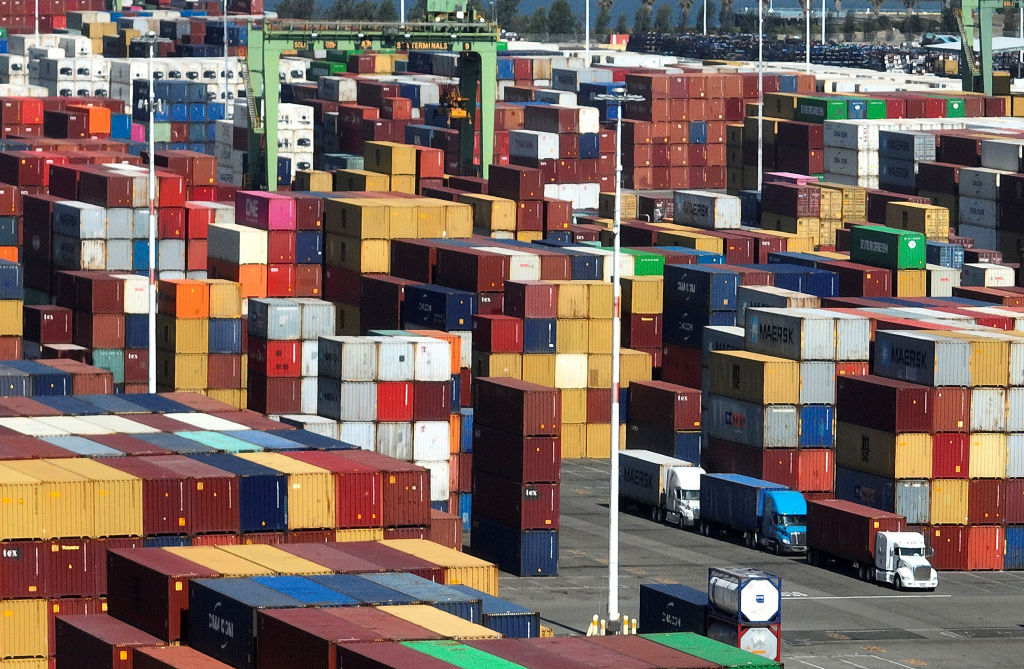
Inflation-weary consumers chose Donald J. Trump for President in part because they were sick of seeing prices continue to rise. Now, in the first few weeks of the Trump Administration, prices for homes, cars, fuel, and food are expected to jump once again because of the tariffs Trump announced Feb. 1 on Mexico, Canada, and China.
[time-brightcove not-tgx=”true”]
Mexico said Feb. 3 that it had reached a deal with the U.S. to delay its tariffs for a month as the two countries negotiate on border security, but the blanket 25% tariffs Trump threatened could still hit later. Trump also struck a deal with Canada to delay his 25% tariffs on Canadian goods (10% on oil and natural gas) for a month. But 10% tariffs on China are expected to go into effect Feb. 4.
Experts say consumer prices on a number of goods are almost sure to rise if these tariffs are in effect for more than a few months. The right-leaning Tax Foundation estimates that the proposed tariffs on Mexico, Canada, and China could add more than $800 of costs to each U.S. household in 2025.
Here are some of the products that could be most impacted:
Housing
Home prices shot up in 2020 and have barely moderated since, but there’s more pain to come for potential buyers, experts say. Materials for homebuilding are getting more and more expensive, and the tariffs won’t help: more than 70% of imports of softwood lumber comes from Canada, according to the National Association of Home Builders (NAHB). The 25% tariff on softwood lumber comes on top of a 14.5% tariff already in place, according to the NAHB. Mexico supplies the U.S. with gypsum, a building material used for drywall, and the price of it is expected to climb when those tariffs go into effect. Tariffs on lumber “increase the cost of construction and discourage new development,” said Carl Harris, chairman of the National Association of Home Builders, in a statement.
Read More: What Trump’s Win Means For Inflation.
Consumers may end up paying in the form of higher home prices, which are already up about 40% since 2020. America has a chronic shortage of homes, and many experts say building houses is the key to easing costs. Last year was already a slow time for homebuilding; construction was started on only about 1.4 million units, the lowest level since 2019 and a 4% decline from 2023. That’s partly because of costs. Inputs to residential construction—essentially labor and materials—are up more than 30% since Jan. 2021. The Trump Administration’s round-up of migrants will also drive the cost of labor up, says Jeff Schott, a senior fellow at the nonpartisan Peterson Institute for International Economics. The roundups will leave fewer construction workers available, he says.
Autos
There are few industries with supply chains that straddle borders as much as automobiles. Parts can be sent across the border to Canada and other countries and then back again numerous times as a car is made, says William Reinsch, senior advisor at the nonprofit Center for Strategic and International Studies. “Even if the tariffs are just on Canada, this is going to royally mess up automobile supply chains,” he says. The U.S. and Canada have had a free trade agreement on automobiles that goes back to the 1970s and predates NAFTA, Reinsch says.
The tariffs on Mexico and Canada could increase the price of a sedan by around $2,000, says Michael Hicks, an economist at Ball State University in Indiana. The cost of a big SUV would go up even more because it has so many different electronic components, he says, estimating that a $50,000 U.S. made car could see its prices increase by $5,000 because of the tariffs.
Energy
Canada is a big supplier of energy, including crude oil, natural gas, and hydropower. Although the energy tariffs on Canadian imports are a bit lower, at 10%, that will still have an impact, says Reinsch. This could lead to pain at the pump in the Midwest, he says, where crude oil from Alberta is sent to refineries which turn it into gasoline.
Gas prices in the Midwest peaked in June 2022 at nearly $5 per gallon, according to the Energy Information Administration. They’ve come down since but started ticking up again in January. “These refineries can’t easily shift to another kind of oil,” Reinsch says, meaning they’ll continue to import Canadian crude and pay the tariffs.
Read More: The Age of Scams.
The energy tariffs could also bump up energy prices in New England and New York, which get some of their electricity from Canadian hydropower. About 53% of Hydro-Quebec’s sales outside of Quebec came from New England in 2023, and 10% came from New York, according to the company’s annual report. The New England Independent Systems Operator, which operates the region’s electricity transmission network, said in a statement that about 9% of electricity demand in New England was met through imports from Canada and New York.
Canada is the source of about 9% of all U.S. natural gas supplies, according to the American Gas Association.
Food
The U.S. grows a lot of food, but it is increasingly reliant on Mexico and Canada for fresh produce, according to the U.S. Dept. of Agriculture. The volume of imported fresh vegetables alone rose nearly 200% over the past two decades.
The tariffs on Canadian imports will affect prices of a few other foods in particular. About 75% of the world’s maple syrup is made in Canada, and the U.S. was the world’s top importer of the stuff in 2023, buying about $280 million dollars worth, according to the World Bank. Even maple syrup made in Vermont and other places in the Northeast could be affected by the tariffs; most of the equipment used in producing it is made in Canada. Companies in Vermont are frantically moving maple equipment over the border, according to the Maple News, a Vermont trade publication.
The U.S. also imports about $17 billion worth of Canadian grain and grain products every year, according to the Grain Growers of Canada. The grain is used for products like bread, pasta, biofuels, feed, and brewing. “Whether you’re growing crops or buying groceries, these tariffs will make life more expensive at a time when most are already being priced out,” Tara Sawyer, an Alberta farmer and chair of the Grain Growers of Canada, said in a statement.
Cheap Stuff Online
Many economists aren’t thinking as much about how the 10% tariffs on China might affect consumers because those tariffs are relatively small compared to the ones announced on the U.S.’s North American counterparts. But there’s one part of the tariffs in particular that could have a big impact on stuff from China. It’s known as the de minimus provision.
For years, companies sending cheap goods to U.S. consumers have been able to avoid tariffs because of the provision, which exempts goods that cost less than $800 from tariffs and inspection. That’s allowed Chinese retailers to send stuff directly to U.S. consumers and avoid taxes that would otherwise be levied on them. One Congressional report from June 2024 found that Chinese e-commerce sites Temu and Shein account for more than 30% of all packages shipped to the U.S. every day under the de minimus provision.
The latest executive orders on tariffs, however, suspend the de minimis provision, saying that it has been used to funnel fentanyl into the U.S. One memo from the U.S. Customs and Border Protection office obtained by TIME said that, as of Feb. 4, 2025, “Requests for de minimis entry and clearance for ineligible shipments will be rejected.” This could mean that some of that stuff you’re buying on the Internet, from clothes and cheap electronics to furniture, is likely to become a little more expensive soon.



